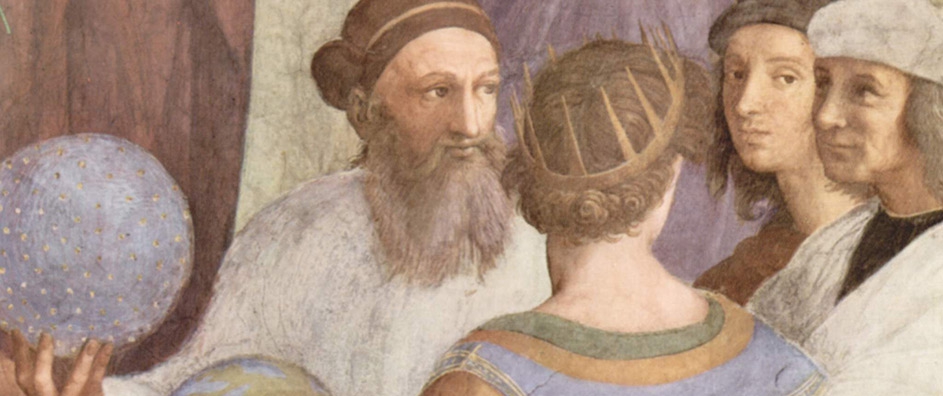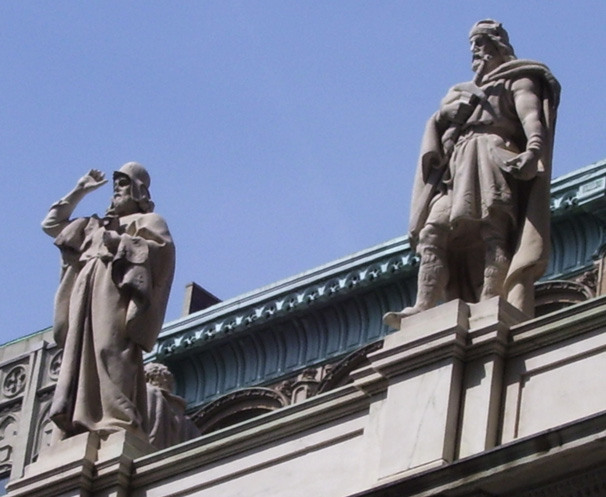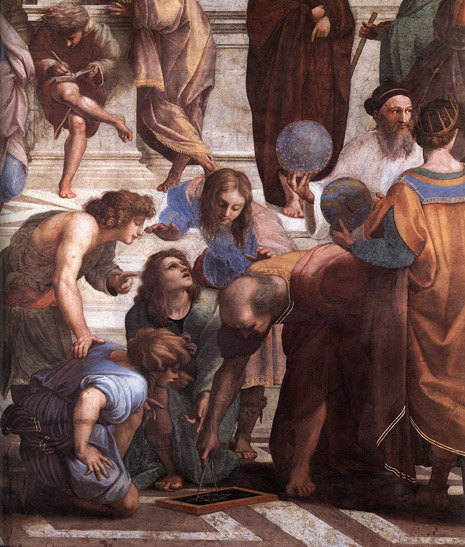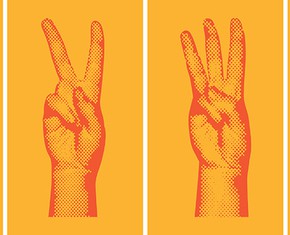The views expressed in our content reflect individual perspectives and do not represent the authoritative views of the Baha'i Faith.
If you ever find yourself in Manhattan, take a walk over to E. 25th Street and Madison Avenue, go to the south side of the building on 25th Street, and look up. You’ll see a beautiful old Beaux Arts Renaissance Revival building that houses the Appellate Division of New York’s Supreme Court, and at the top of the building, grouped with other sculptures representing the world’s historical, religious and legendary lawgivers, you will definitely notice a towering sculpture of the ancient Persian prophet Zoroaster.
Few westerners now even know about Zoroaster, who lived in eastern Persia (now Iran and Afghanistan) more than a millennium before Christ, probably sometime during the period between 1400-1200 BC (although some historians propose much earlier dates). Like many ancient Faiths, the origins and even the original teachings of Zoroastrianism are now lost and obscure. Few Zoroastrians now exist – probably less than a few hundred thousand in the world today – because only the descendants of Zoroastrians can be considered as believers.We know very few facts about Zoroastrianism’s ProphetFounder, Zarathustra (known as Zoroaster in the West). Followers passed down the teachings of Zoroaster to successive generations for probably over a thousand years before they were finally written down and incorporated into scripture known as the Avesta. Apparently, when they were written down, only a few copies were made. These were then subsequently lost or destroyed in the ensuing attacks of Arabs, Turks, and Mongols. The oldest copy in existence dates from 1323 A.D., and great scholarly debate surrounds the authenticity of this scripture.
We do know this: Zoroaster taught, just as all the founders of the great Faiths did, that each individual has the free will to choose right or wrong, and that our free will gives everyone individual responsibility for their actions. In Zoroastrian belief this personal and spiritual choice means accepting aša (truth, which leads to the divine), and rejecting druj (lies, which lead to ignorance and chaos).
Much of what we know about Zoroastrian beliefs resonates with our knowledge of the other great Faiths. Like every legitimate Prophet, Zoroaster encouraged his followers to think good thoughts, speak good words, and do good deeds for others. Zoroastrians believe that we increase the overall divine force in the world and in ourselves with these good actions, which propel us forward on the everlasting road to oneness with the Creator.
However, some students of religion suggest that Zoroastrians believe in two supreme Beings. Do they? Baha’is believe that Zoroastrians teach there is One eternal God, whom they call Ahura Mazda. Yet, the Zoroastrian scriptures say: “Truly there are two primal spirits, twins renowned to be in conflict. In thought and word and act they are two: the good and the bad.”
This dualism does not reflect a belief in two gods. Instead, it echoes the basic Zoroastrian belief in aša and druj – truth and lies – as the constant test of character every person faces. This idea reflects the universal belief in the Semitic faiths (Judaism, Christianity and Islam) that there are two spirits in the world battling for the occupation of our soul: the spirit of good and of evil.
In fact, Zoroastrianism has contributed much to the thinking of the ancient peoples in the Middle East including the Greeks, the Romans, and those who wrote “Western” scripture. Many historians believe that Zoroastrians gave those ancient peoples the personification of good and evil so liberally diffused through the Bible. Further, the three magi who came from the East following the star which led them to the infant Jesus were most likely Zoroastrian priests. If this is true, can Zoroastrianism be so foreign?
The Baha’i writings include Zoroastrianism in the pantheon of the world’s great Faiths:
The holy Manifestations Who have been the Sources or Founders of the various religious systems were united and agreed in purpose and teaching. Abraham, Moses, Zoroaster, Buddha, Jesus, Muhammad, the Bab and Baha’u’llah are one in spirit and reality. – Abdu’l-Baha, The Promulgation of Universal Peace, p. 197.
So if Zoroastrianism differs in any essential way from the more modern religions, it is slight and easily understood by recognizing the changing capacity of people to deal with concepts such as good and evil. Baha’is revere Zoroaster, who trained and educated His people, brought them out of the darkness of error and into the knowledge of right and wrong, and enabled His followers to build a civilization that ultimately benefitted all humanity.
You May Also Like
Comments



















Now, I'm told that these are loose, disconnected prophecies, but if we take the (historically conceded) dates of all these events, the first prophecy concerns the ...'religion of the Arabian' - Islam. it is accepted by a good many historians to have begun 622 AD; the overthrow of the Kingdom of Iran is marked by the final battle of Yazdigird III (651 A.D.) - and the degradation of the Zoroastrian community. The members had one of three choices: a] exile, b] execution, or c] recite the 'shahada' and live a degraded life as lower-class 'Muslims'. This degradation was initiated by a decree - presumably past the end of the 'last battle' - somewhat near 660 AD. Add 1200 to that, and we come very close - within a 5 yr tolerance - to Baha'u'llah's declaration to the world.
Your thoughts?